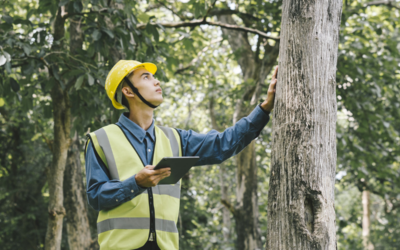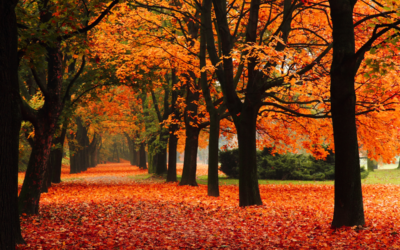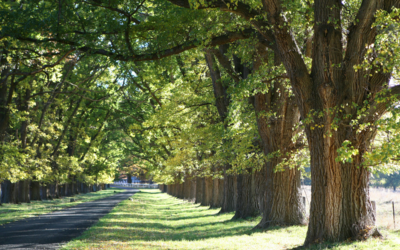You probably know that counting the concentric rings in a cross-section of a tree trunk can tell the tree’s age. But that’s just the beginning of the wealth of information contained in the rings. Scientists can examine and test the rings to uncover years, even centuries, worth of knowledge about climate, atmospheric changes, and local geography.
What Tree Rings Can Tell Us about Climate – and What They Can’t
Trees in temperate zones add a layer of seasonal growth between old wood and their outer bark. By examining this growth pattern, scientists using a technique called dendrochronology can assess which years were good for growth and which weren’t. Moisture is a principal element in tree growth, and growth rings give a good indication of which years were wet and which were dry.
Of course moisture isn’t the only determinant of tree growth. Other factors such as temperature, cloud cover, and soil conditions affect it, too. While the tree rings can’t record all of those things, the ring data can be combined with other known geological and weather information for a more complete picture. And since some trees can live for hundreds of years, correlating ring data with other information can potentially add significantly to the historical climate tableau.
Gathering Tree Ring Data
Fortunately, you don’t have to cut a tree down to study its growth rings. Scientists use a tool known as an increment borer to extract samples of the tree’s core, similarly to taking a core sample of soil. Samples are taken from several trees of the same species to compare in order to eliminate individual variations. Then the samples are taken to a lab and examined microscopically for ring width and cell density.
Depending on the tree species’ characteristics, these exams can give valuable information about moisture and temperature changes over time.
The Limitations of Ring Study
Trees don’t grow everywhere, so some areas like oceans, polar regions, and places above timberline won’t have trees to study. Since trees only grow seasonally in temperate areas, there won’t be much information about winter conditions, either. And trees in tropical regions grow year-round and don’t show distinct annual rings.
But shorelines change and glaciers expand and recede, so in some places ancient trees can be found in good enough condition to study. Plus, some trees like the bristlecone pine live for thousands of years and are preserved in their dry climates well beyond that.
The Future of Tree Ring Study
Dendrochronology is a relatively new science, and as researchers gather more information around the globe, fresh insights into tree ring study are being gathered. As obstacles are overcome and data is merged with other knowledge, scientists will be better able to understand climate history and predict the effects of future changes.
For Further Information
You can learn more about dendrochronology and what tree rings can tell us at these websites:
- The National Centers for Environmental Information, part of the National Oceanic and Atmospheric Administration (NOAA)
- The Paleontological Research Institution at Cornell University
Take an Active Role in Your Trees’ Health
Landscape trees play an important role in climate management, plus they add value to your property. Choosing and planting them properly is an important first step, and keeping them healthy and well maintained adds to their value.
While we can’t control the weather, the pros at Donovan Arborists can offer planting and care for your trees as well as a complete landscape maintenance package for property in the Denver area that includes care of trees, shrubs and turf. We use environmentally friendly practices and a holistic approach, focusing on the greater picture of the plants, their surroundings, soil, water, climate and light exposure to create optimal outdoor environments for your landscape to thrive.



